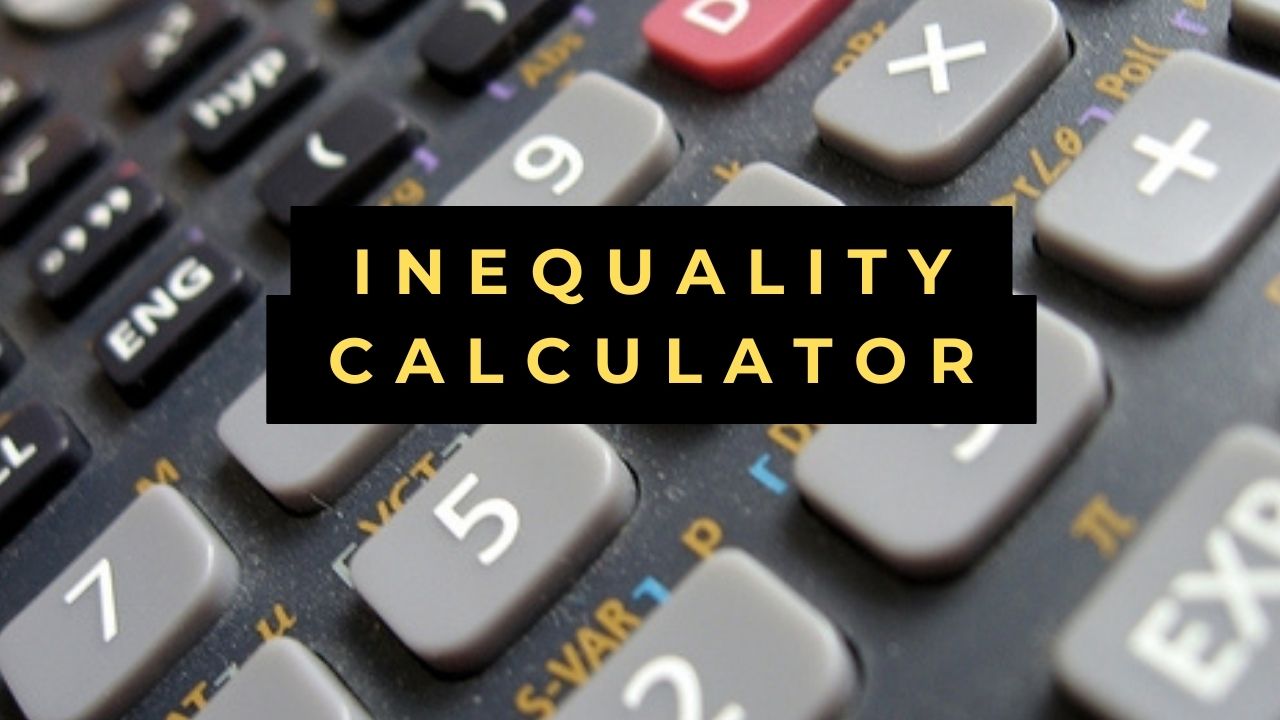Inequality Calculator
- Inequality Calculator
- Indefinite Integral Calculator
- Inch To Feet Calculator
- Improper Integral Calculator
Inequality Calculator with Steps
Effortlessly solve and visualize inequalities with the Inequality Calculator. Learn how to graph inequalities, find solutions, and interpret results accurately and efficiently. Simplify your mathematical computations today!
Inequality Calculator
Welcome to our comprehensive guide on exploring inequalities using the Inequality Calculator. In mathematics, inequalities represent relationships between values that are not necessarily equal. They play a crucial role in mathematical modeling, optimization, and decision-making processes. In this article, we’ll delve into the concept of inequalities, their graphical representation, and demonstrate how to use our calculator to solve and visualize them effortlessly.
Understanding Inequality Calculator
An inequality is a mathematical statement that compares the relative size of two values. It can be expressed using symbols such as <<, >>, ≤≤, or ≥≥. Inequalities can involve variables, constants, and mathematical operations, allowing us to represent a wide range of relationships between quantities. Understanding and solving inequalities are essential skills in algebra, calculus, and various applied fields.
Importance of Accurate Computation
Accurate computation of inequalities is essential for mathematical analysis, decision-making, and problem-solving in diverse contexts, including finance, economics, engineering, and social sciences. Whether you’re optimizing production processes, analyzing market trends, or designing algorithms, precise solutions and interpretations of inequalities ensure reliable results and informed decision-making.
How the Inequality Calculator Works
The Inequality Calculator simplifies the process of solving and visualizing inequalities by providing instant and accurate results. Simply input the inequality expression into the designated field, and the calculator will compute the solution set and generate a graphical representation of the inequality on a coordinate plane automatically. Our user-friendly interface makes it accessible to users of all mathematical skill levels.
Step-by-Step Guide to Using the Inequality Calculator
- Enter Inequality Expression: Input the inequality expression into the designated field.
- Click Calculate: Initiate the calculation process by clicking the calculate button.
- View Solution Set: Instantly receive the solution set of the inequality and visualize it on the graph.
Practical Applications
Inequalities find application in various real-world scenarios, including optimization, decision-making, and risk analysis. Whether you’re maximizing profits, minimizing costs, or setting constraints in engineering designs, understanding and solving inequalities are essential skills for practical mathematics and applied sciences.
Advantages of Using the Inequality Calculator
- Efficiency: Saves time by automating the process of solving and visualizing inequalities.
- Accuracy: Provides precise solutions and graphical representations, minimizing the risk of errors in mathematical computations.
- Versatility: Applicable to a wide range of inequality types and problem contexts.
Common Errors to Avoid
When using the Inequality Calculator, users should be cautious of common errors that can affect the accuracy of computations:
- Incorrect Inequality Format: Ensure that the inputted inequality expression is correctly formatted and represents the intended mathematical relationship.
- Graphical Misinterpretation: Verify that the graphical representation accurately reflects the solution set of the inequality and its orientation on the coordinate plane.
- Parameter Selection: Be mindful of selecting appropriate parameters and settings when visualizing inequalities to ensure clarity and relevance.
Tips for Efficient Computation
To optimize efficiency and accuracy when solving inequalities, consider the following tips:
- Understand Inequality Properties: Familiarize yourself with the properties of different types of inequalities, including linear, quadratic, and rational inequalities, to select suitable solution methods and interpretation techniques.
- Interpret Graphical Solutions: Interpret the graphical representation of inequalities in the context of the problem being analyzed to draw meaningful conclusions and make informed decisions.
- Validate Results: Validate the computed solution set by checking it against alternative methods of inequality solving or using real-world data and scenarios.
FAQs
Q: Can the Inequality Calculator handle complex inequality expressions involving multiple variables and functions?
Yes, the calculator can handle a wide range of inequality types, including linear, quadratic, polynomial, exponential, and logarithmic inequalities.
Q: Is the Inequality Calculator suitable for educational purposes?
Absolutely! The calculator is an excellent educational tool for teaching and learning about inequalities, graphical representation, and mathematical problem-solving.
Q: Can I access the Inequality Calculator on mobile devices?
Yes, the calculator is compatible with both desktop and mobile platforms, ensuring accessibility on the go.
Q: Does the calculator provide step-by-step solutions to inequality problems?
While the calculator offers instantaneous results, users can find step-by-step solutions in accompanying guides or resources.
Q: Are there any fees associated with using the Inequality Calculator?
No, the calculator is free to use and requires no subscription or payment.
Q: Can I trust the accuracy of the computed solutions provided by the calculator?
Absolutely! The calculator employs robust algorithms to ensure precise and reliable computation of inequality solutions and graphical representations.
Conclusion
In conclusion, understanding and solving inequalities are essential skills in mathematics and various applied fields. The Inequality Calculator serves as a valuable tool for simplifying this process, offering efficiency, accuracy, and versatility. By following the guidelines outlined in this article, you can confidently solve and visualize inequalities and analyze their implications with ease.

